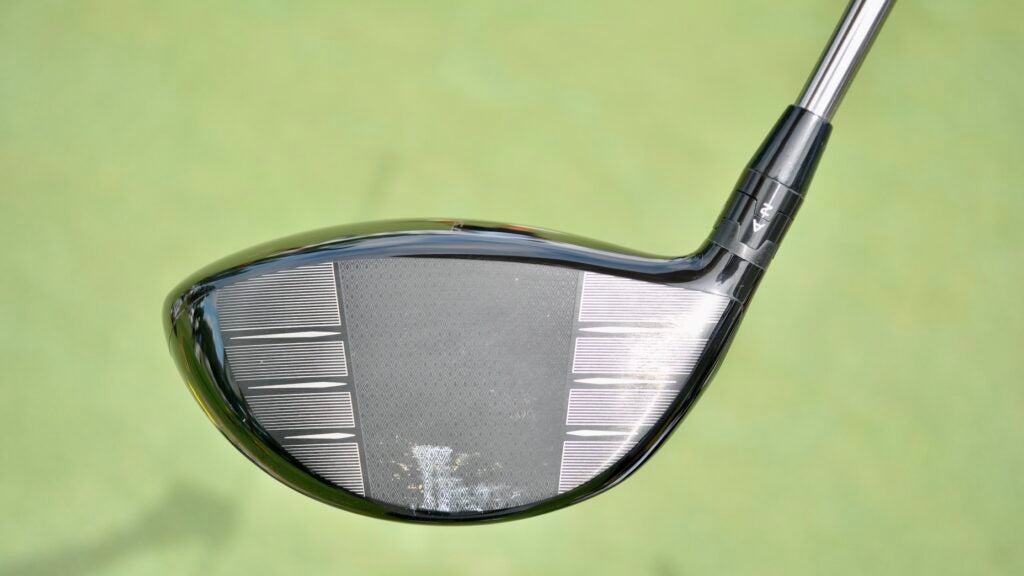The obvious question on everyone’s mind when a new driver drops is whether the latest version is better than its predecessor. In this case: Is Titleist’s TSR better than TSi? For most weekend golfers, “better” is generally tied to more distance. Looking back at the shift in face construction from TS to TSi, it was natural to expect significant ball-speed gains — a 4-6 mph increase was normal — which we saw during initial testing.
With Titleist retaining one of the fastest face constructions in the industry, golfers need to temper their distance expectations. Most pros have reported a modest 1-2 mph ball-speed bump, and I saw something similar during testing. In fact, with the help of Golf Laboratories’ swing robot, we learned the ball speed numbers were very similar between TSR and TSi at 95 mph.
So if distance isn’t the name of the game with the latest release, what makes TSR a better product? It starts with something I heard from pros early on during the testing process. “The mishits are really good,” said Tour pro Davis Riley. “I’m finding really consistent spin across the face no matter where I’m hitting it, so that you’re maxing out your carry numbers every time. It’s what you really want to look for. It’s not how good your good hits are. It’s, ‘How good are your bad hits?’ And just seeing that consistency across the face is really cool to see.”
Consistent spin isn’t something golfers ask for when they start testing the latest driver wares, but it’s a benefit that can mitigate the penalizing misses. Robotic testing confirmed there’s an uptick in tighter spin rates across the entire face, especially in the high toe section. The result is a tighter carry distance delta — in relation to center face impact — for one of the most common misses.
In layman’s terms, it means you can miss the center and not have to worry about seeing a significant distance drop-off. The carry distance delta between center and high toe went from 12 yards (when averaging all three TSi models) to 9 yards with TSR. The improvement can be attributed to the tighter spin rate delta.
Here’s a look at how TSR and TSi stack up when focusing on only center and high toe spin rate performance.
TSR2 (Δ 350 RPMs) vs. TSi2 (Δ 508 RPMs)
TSR3 (Δ 361 RPMs) vs. TSi3 (Δ 554 RPMs)
TSR4 (Δ 310 RPMs) vs. TSi4 (Δ 567 RPMs)
In addition to seeing improved carry numbers, all three TSR drivers produced a slightly lower launch and less spin.
TSR2: 10 degrees (launch avg. 9 face points), 2,420 RPMs (spin rate avg.) | TSi2: 10.9 degrees, 2,482 RPMs
TSR3: 9.9 degrees, 2,282 RPMs | TSi3: 10.4 degrees, 2,394 RPMs
TSR4: 10.6 degrees, 2,261 RPMs | TSi4: 10.7 degrees, 2,528 RPMs
A reduction in spin and launch helped Nelly Korda recently pick up 10 yards of additional carry, so distance gains remain a possibility. But don’t fixate on distance with TSR. What makes this driver better than TSi is improved launch, spin and carry characteristics across all three driver models.
They’re more consistent — and reliable — where it matters most.
Want to overhaul your bag for 2023? Find a fitting location near you at GOLF’s affiliate company True Spec Golf. For more on the latest gear news and information, check out our latest Fully Equipped podcast below.
